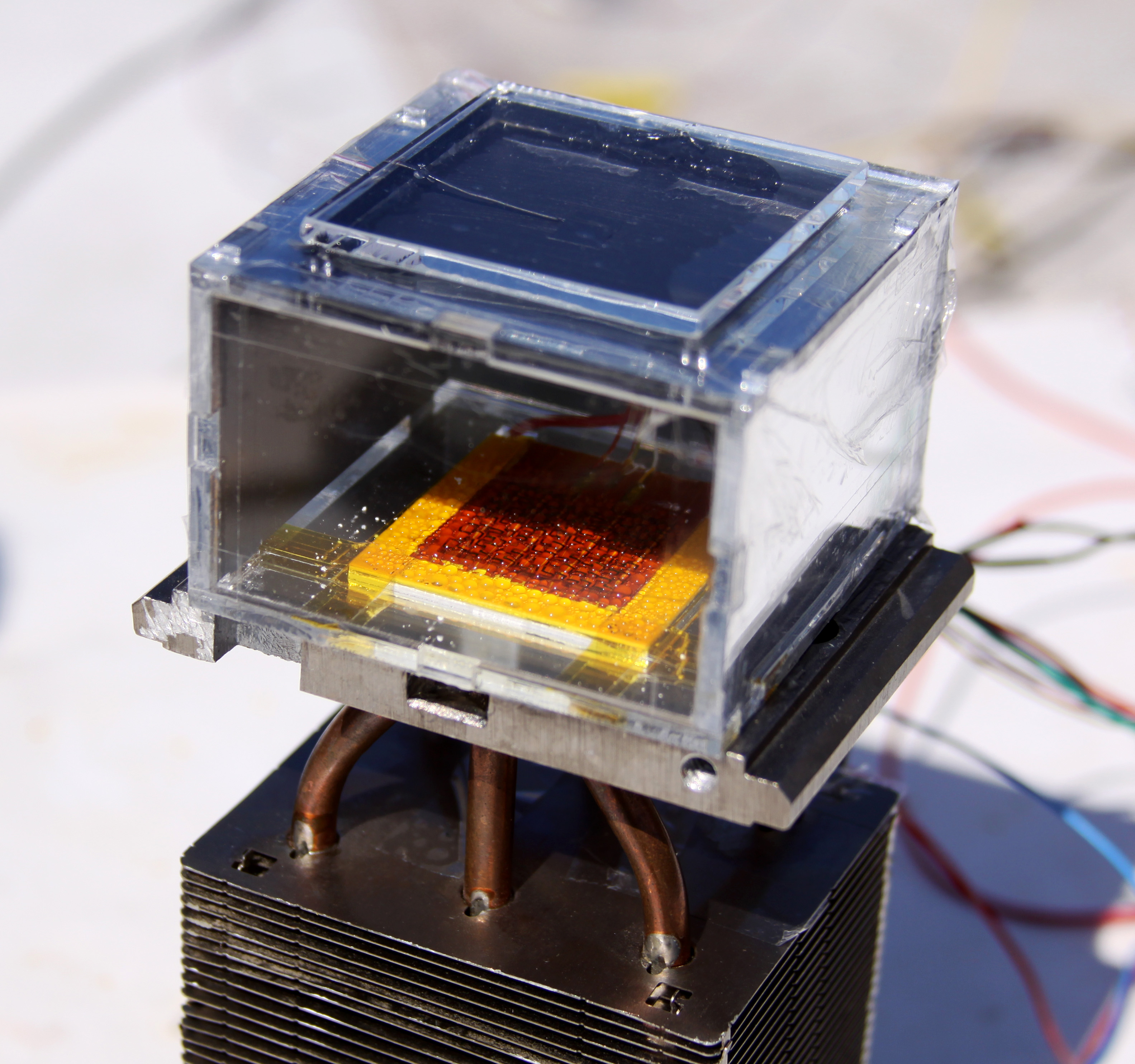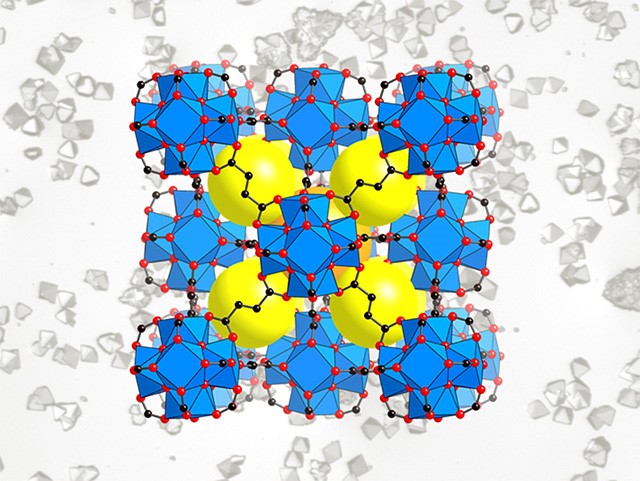Scientists have created a solar-powered device that can get drinkable water from air in the desert. If future space travellers visit a dry desert planet and need to find a drink, it’s possible they could one day use a similar device there, too, but in the meantime, something like this could be a huge help to water-deprived people who live in arid climates.
The device, which looks a little like the EG-series power droid from Star Wars, uses a custom-built metal-organic framework (MOF) to seek out water, even in dry climates with humidity as low as 20 per cent, and trap it in vapour form. It’s reported in the journal Science.
Videos by VICE
MOFs are one, two, or three-dimensional chemical compounds. If chemistry were a toy chest, MOFs would be made using a box of Straws and Connectors. Their look depends on which metal ion or cluster of metal ions (connectors) are linked by whichever organic molecule (straws). MOFs are extremely versatile because their chemical characteristics can be modified according to different uses.

The water-harvesting device. Image: Evelyn Wang/MIT
They were invented in the mid-90s by Omar Yaghi, a chemistry professor at UC Berkeley, and his team. “The nice thing is that you can craft the interior of the MOF by physically changing the dimensions of the pores, as well as the shape,” Yaghi said in a phone interview with Motherboard.
To be able to suck water out of low-humidity climates, Yaghi chemically modified the pores on the MOF so that they were suited to attract water molecules and sequentially release them once in contact with low heat.
Read More: Watch MIT’s Amazing Fog Harvesters Produce Fresh Water in the Atacama Desert
Yaghi then reached out to Evelyn Wang, an associate engineering professor at MIT, who built a device that would extract the molecules from the MOF to get clean drinking water.
“To do that, we needed to provide some low-grade heat, or, the Sun,” Wang told Motherboard in a phone interview. The energy from the Sun allows the vapour molecules to un-stick from the MOF. Then, those molecules are changed from vapour to liquid via condensation.
“The condenser is what allows us to, you know, be drinking water rather than water vapour,” said Wang.
The process sets the device apart from other products, like WaterSeer, which tends to not work in climates with humidities lower than 50 per cent, said Wang.
“The material is critical,” she said. “The MOF dictates behaviour, performance and ability to capture the water in different conditions.”

A schematic of a metal-organic framework. Image: UC Berkeley and Berkeley Lab
Although the device is still in the development phase and can only produce 2.8 litres of water per day for every kilogram of MOF used, Yaghi said the team’s next step is to scale up. He predicts that as the mass of the MOF is increased, so will the amount of water produced. If the team uses two kilograms of MOF, they can produce around 5.6 litres of water.
Yaghi said that there is no date set for the device to hit the market. Their next steps involve figuring out how much it would cost to buy.
Wang said that this device can be used on a larger scale, which will hopefully help those who are suffering from a lack of clean drinking water.
“The next stage is to maximize the amount of water, optimize the material and proceed to commercialize the device,” Yaghi said.
It just needs a presence of water in the environment to function, so of course I asked Wang if we could use it on other planets. “It depends on the conditions,” she said. “If it’s on another planet…and if there’s water to be captured, then we can do it.”
Motherboard is nominated for three Webby Awards for Best Science YouTube Channel, Best Drama, Best Tech/Science Podcast. Please vote for us!




